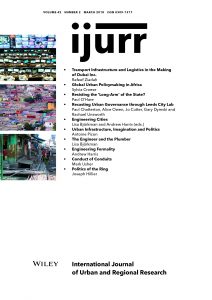This article argues for the importance of social imagination in the understanding of urban infrastructures, especially those designed and built by engineers. It begins by defining social imagination as image-based systems of representation and values that are shared by various collective stakeholders concerned with infrastructure, such as engineers, but also politicians, administrators, operators, maintenance technicians and indeed users, and then introduces a tripartite model of infrastructure. Infrastructure is interpreted as the result of the interactions between a material basis, professional organizations and stabilized socio-technical practices, and social imagination. The notion of network is interpreted from such a perspective. Its dependence on imagination is outlined. Through two case studies, the nineteenth-century networked metropolis, epitomized by Haussmann’s Paris, and the rise of the contemporary smart city perspective, the role of social imagination in the conception of urban infrastructure is analyzed further. What seems at stake in the transition towards the smart city is the increased importance given to occurrences, events and scenarios as the basis for urban infrastructure regulation.

